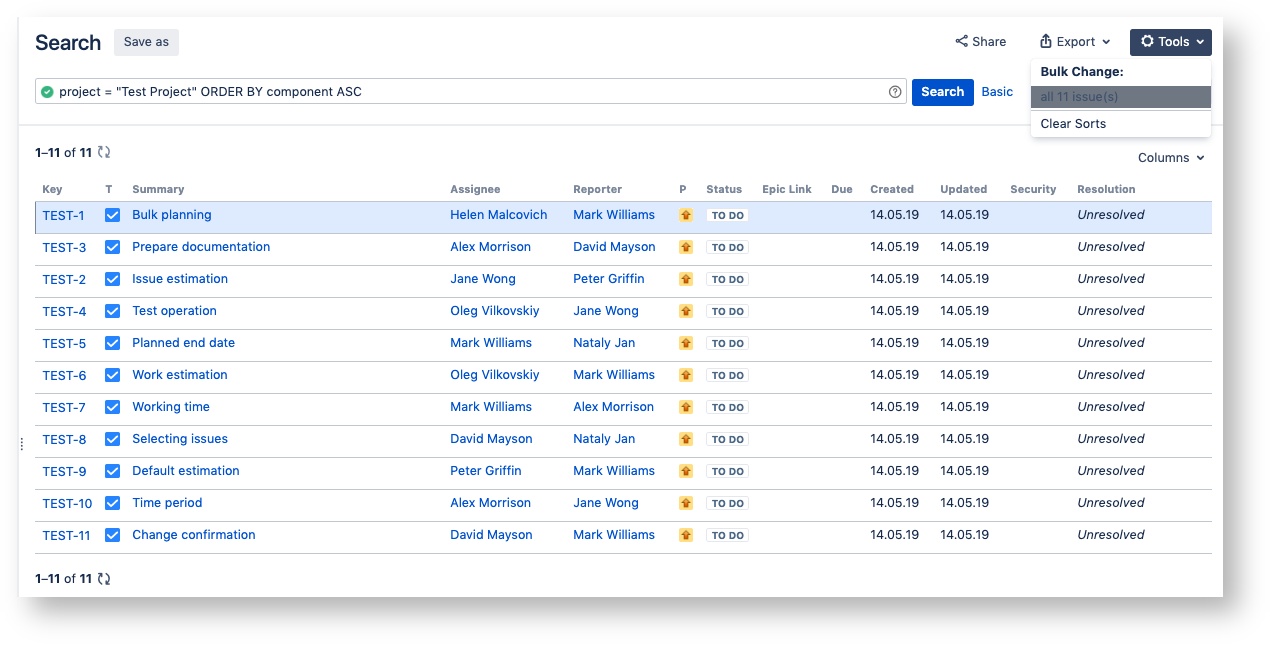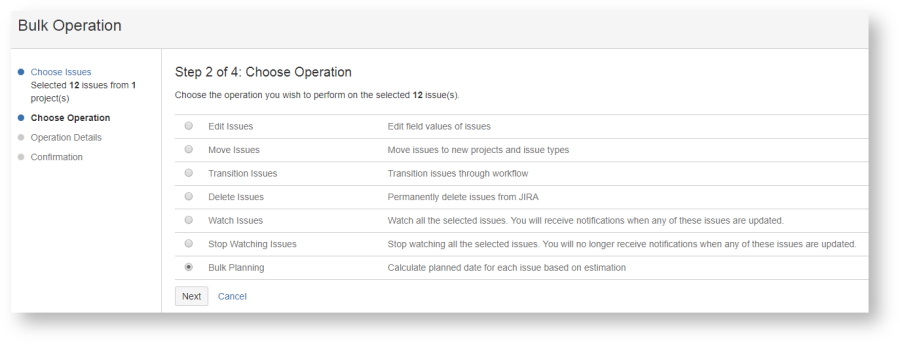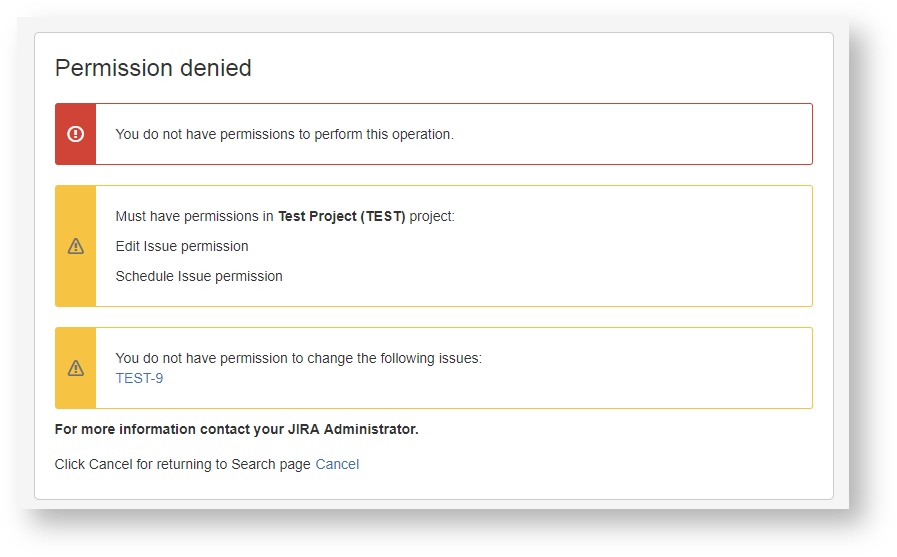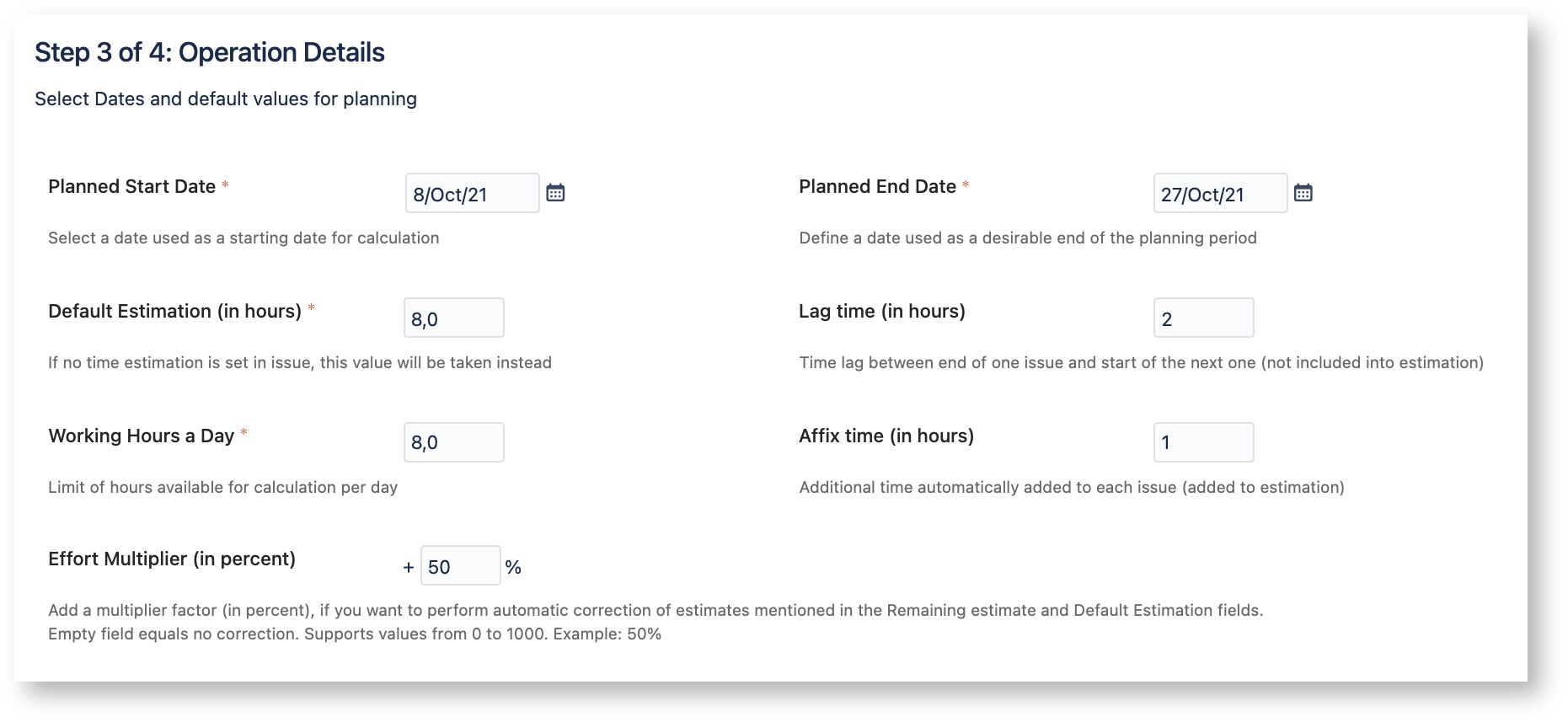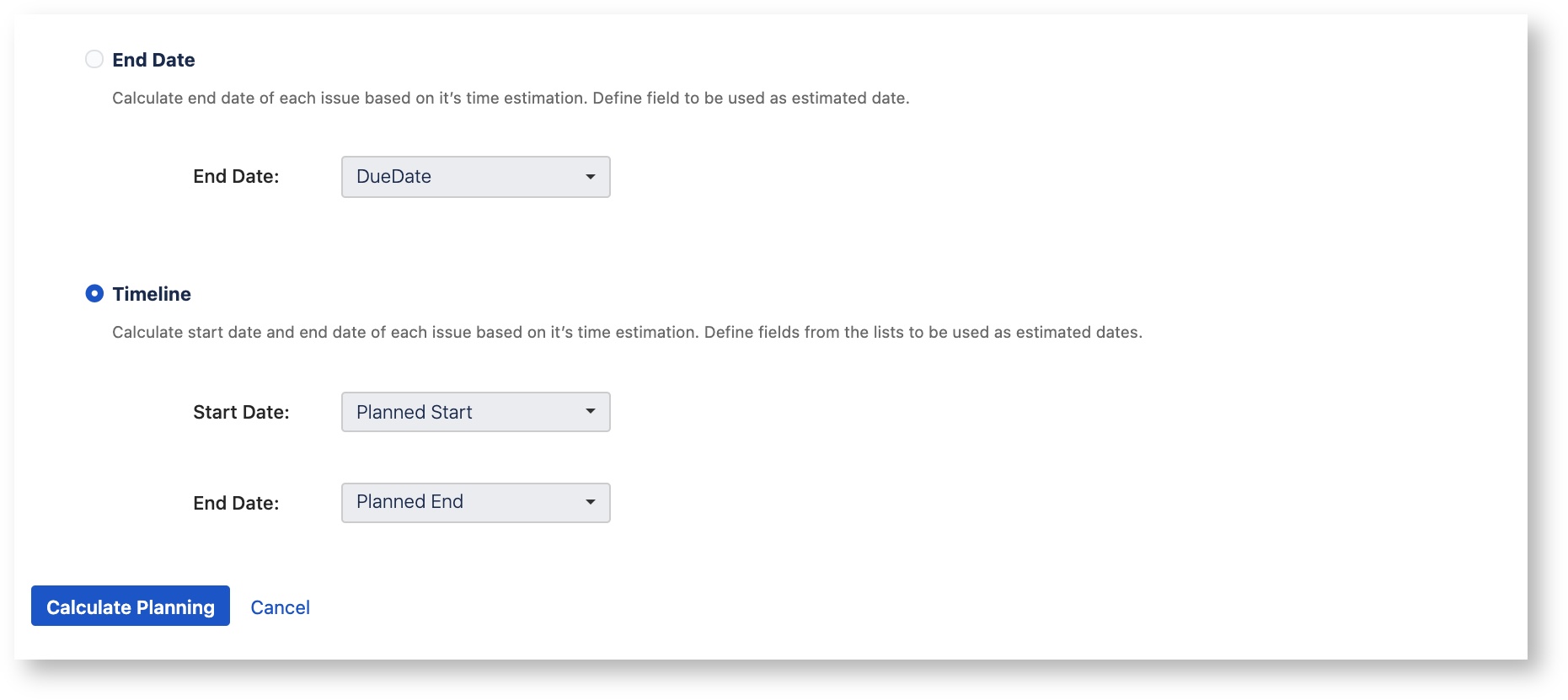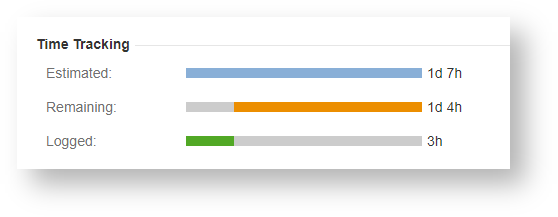Bulk Planning - User Guide
Bulk Planning functionality allows automatic calculation of planned completion of issues.
The system calculates the time for issue completion (Time Estimations) and takes into account each team member's (Task assignee) workload.
Thus, using the list of issues and planned completion date, the system can calculate an estimated deadline for issues which a team member can finish accordingly to his / her workload.
1. Issue Filter
To choose an issue list, create a JQL query.
- Click Issues -> Search for Issues or open any saved filter.
- After selecting issues, click Tools -> Bulk change.
2. Issue Selection
- Choose an issue for which completion time estimate is required.
- Click Next.
3. Operation selection
- From operations list, choose Bulk Planning.
- Click Next.
Permissions
If a user has no permission to edit at least one issue from the chosen list, the following error message appears.
To edit the Due Date field, a user must have permissions in TEST project.
- Edit issues
- Schedule issues
In this case a user does not have permission to edit issue in TEST-9. The reason can be given by the Project Owner or JIRA Administrator.
4. Input Data
To calculate the date, fill out the following fields: Planned Start Date (only business days are available)
Planned End Date (only business days are available)
Default Estimation – default number of hours left for completion (used only if issue estimation is missing)
Working Hours a Day – number of business hours per day (used while calculating estimated hours)
Affix time (in hours) - time that will be automatically added to estimation for each issue and will be counted when calculating its End date and Start date of the next issue.
Lag time (in hours) - time delimiter added between issues. This time is not included into estimation.
Effort multiplier (in percent) - adds extra time to each issue in percent of each issue’s estimation. Example: If estimation is 10 hours, a +50% multiplier will add 5 hours estimation to issue making it 15 total.
Modes
User can choose to plan the workload in 2 ways:
End date - This mode calculates planned completion date of each issue and writes it into the field mentioned in this mode. By default this is Due date field, but you can choose any field of your choice from the dropdown list.
Timeline - Timeline mode calculates and writes down both the Start date and the End date when work on issue is supposed to start based on the planning. To update information in issue select Start date and End date in the corresponding fields.
Click Calculate Planning.
5. Confirmation
No changes are made to issues on this step.
After preliminary calculation the issues list with Due Date attributes is displayed.
Due Date column indicates the value of Due Date fields. The issues marked were processed by Bulk planning.
![]()
If necessary, a user may change planning dates manually.
![]() Planning is carried out individually for each agent (assignee) regardless of other agents.
Planning is carried out individually for each agent (assignee) regardless of other agents.
Bulk planning for issues is based on:
- Task priority (defined by the list order)
- Time for completion (Remaining Estimate)
Completion time for this task is 1 day and 4 hours. If the time is not specified in the task, Default Estimation attribute is used on Steps 3-4.
For informational purposes the user can see the result of the change process.
